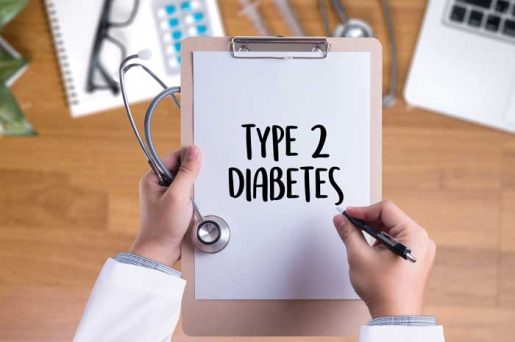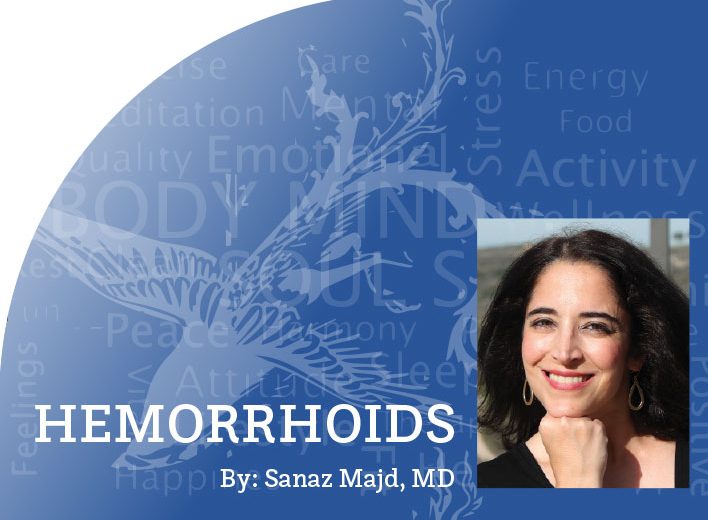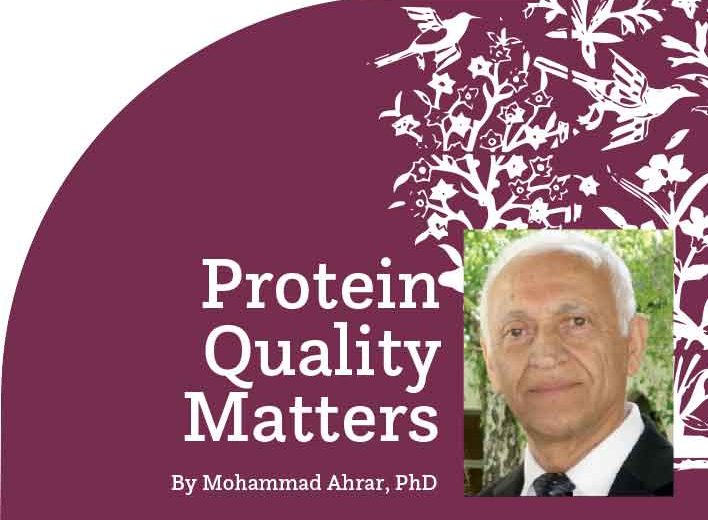TYPE 2 DIABETES
By Sanaz Majd, MD
 Over 10% of the U.S. population, approximately 34 million people, suffers from type 2 diabetes. And there is a high rate amongst Middle Easterners, including Iranians, where ethnicity and genetics may play a large role. More than likely, you know someone with diabetes in your family and/or have diabetes or are at risk of developing it yourself.
Over 10% of the U.S. population, approximately 34 million people, suffers from type 2 diabetes. And there is a high rate amongst Middle Easterners, including Iranians, where ethnicity and genetics may play a large role. More than likely, you know someone with diabetes in your family and/or have diabetes or are at risk of developing it yourself.
Dr. Ahrar is covering the vital role that nutrition plays in type 2 diabetes in this issue, so make sure to check out his article as well. But let’s review what type 2 diabetes really is, its complications and risks, and options for medical management other than nutrition in this article.
What is Type 2 Diabetes?
About 95% of all diabetics diagnosed actually have type 2 diabetes. Unlike type 1 diabetics, who simply do not produce enough insulin, type 2 diabetics have “insulin resistance.” This occurs when the body’s cells become resistant to the effects of insulin.
After a meal, glucose is absorbed from the gastrointestinal (GI) tract into the bloodstream. Then, this circulating glucose stimulates the pancreas to release insulin. Insulin then binds to a doorway of sorts, referred to as a “receptor,” on the outside of our cells. This triggers other receptors on our cells to open and allow glucose to enter the inside of the cell.
Those with type 2 diabetes have impaired insulin receptors, which means that their cells are “resistant” to insulin, hence why it is referred to as “insulin resistance.” When this receptor is dysfunctional, glucose has a difficult time entering the cell. Hence, this elevated glucose level outside the cell (in the bloodstream) then triggers the pancreas to release more and more insulin in order to attempt to push the glucose into the cell.
This elevated insulin circulating in the blood then causes weight gain and hunger, and hence, even more insulin resistance. It is a vicious cycle.
Risk Factors for Developing Type 2 Diabetes
About 39% of diabetics have at least one parent who also has the condition, as genetics play a large role. (1) However, besides genetics and a family history of type 2 diabetes, weight gain also significantly increases the risk of developing diabetes. With increased weight, our receptors become more resistant.
Diminished physical activity is also another risk factor; exercise alone, without weight loss, has also been shown to decrease insulin resistance. (2) At least 30 minutes of moderate-intensity exercises, such as aerobics, on most days of the week can help decrease the risk of developing diabetes.
Medications’ side effects, although a less common cause, can increase weight gain and predispose to diabetes as well. The most common culprits are corticosteroids (such as those to treat autoimmune disorders such as rheumatoid arthritis) and antipsychotics (used to treat bipolar disorder and other mental health conditions).
Unfortunately, some diabetes medications can also ironically cause weight gain, such as the sulfonylureas (like glipizide and glyburide) and, of course, insulin. This is the reason that type 1 diabetics are often thin and/or underweight (because they do not produce enough insulin), but when given insulin they gain weight. Insulin will also cause weight gain in type 2 diabetics, however, who are often already overweight.
People with other insulin-resistant medical conditions are also more likely to develop diabetes in their lifetime. These include those with a history of gestational diabetes, polycystic ovarian syndrome (PCOS), metabolic syndrome, or fatty liver.
Complications of Type 2 Diabetes
If left untreated, diabetes can cause some very serious complications. Chronically elevated blood glucose levels eventually damage the blood vessel lining. When this involves smaller blood vessels, we call this “microvascular” disease—these complications include involvement of the smaller (hence the term “micro-”) blood vessels that damage the supply to the eye to cause “retinopathy,” the vessels that feed the nerves to cause “neuropathy,” and the blood vessels that supply the kidneys. Diabetes is the top cause of dialysis.
When diabetes damages the larger blood vessels it is referred to as a “macrovascular” disease, hence the term “macro-”. This contributes to the development of graver complications like heart attack and stroke. Cardiovascular disease is the top cause of death in women and men in the United States and diabetes is one of the top risk factors contributing to cardiovascular disease.
Interestingly, glycemic control (strict lowering of blood glucose levels) has not been shown to significantly reduce macrovascular complications (i.e., heart attack and strokes) in those with long-standing diabetes as much as it has for microvascular complications. (3,4,5) Controlling your blood glucose levels will best reduce your risk of developing retinopathy (vision loss), kidney dialysis, and nerve pain. Hence, it will most help improve your quality of life if you have had diabetes for a long time.
On the other hand, to reduce the risk of macrovascular complications, what has been shown to be most effective is reducing your other risk factors for heart disease besides diabetes—such as quitting smoking, reducing cholesterol and, most importantly, controlling blood pressure. What I often tell my diabetic patients is that the one thing I can do to improve your life span and save your life is to control your blood pressure.
Therefore, controlling your blood glucose will help improve your quality of life, and controlling your blood pressure (and other risk factors) will help increase your quantity of life. They go hand in hand.
Diagnosis of Type 2 Diabetes
Screening for diabetes has become quite easy in recent years with the development of a screening blood test called the “hemoglobin A1c.” Most doctors no longer use the antiquated 2-hour glucose tolerance test, where high glucose-containing solution is consumed and blood glucose is measured after consumption. Nor are we relying on fasting blood glucose measurements—if you catch a diabetic on a good day, the fasting blood glucose can be deceivingly normal.
The convenience of the A1c has replaced the previous methods, as patients are no longer even required to fast prior and the test is a quick blood draw. Hemoglobin is a protein present in red blood cells which helps carry oxygen through the bloodstream and glucose tends to bind to hemoglobin. Because red blood cells typically survive for 3 months at a time, the test will reflect the average amount of glucose bound to hemoglobin for the past 3 months.
An A1c level of 5.6 or lower is considered normal, 5.7 to 6.4 reflects prediabetes, and 6.5 and higher indicates diabetes. For those who have been diagnosed with diabetes, most people’s treatment goal is to remain below 7% (which equates to an average of 152 blood glucose level). However, it is reasonable to set a more aggressive goal of less than 6.5% in those who are younger, healthier, and/or with greater life expectancies.
Treatment of Type 2 Diabetes
Diabetes is a metabolic disorder that is heavily influenced by our diet. As those of you who read my articles may know, I am a huge proponent of the Intermittent Fasting lifestyle. It sets guidelines for not only what to eat, but when to eat. Please check out my prior Peyk article on this topic, which can be especially useful in diabetics and prediabetics. But bottom line, your nutrition really matters. And diabetes is a disorder that can be primarily managed by lifestyle modifications, which Dr. Ahrar also discusses in his article. Nutrition, exercise, and weight loss are absolutely key to the management of diabetes and should not be underestimated.
But there are numerous groups of drugs (besides insulin) that can be used to lower glucose levels when necessary, with several novel pharmaceutical methods that were developed in recent years. Your doctor can best review the pros and cons of each. Here is a quick list to refer to:
Metformin: This is often the first-line medication treatment for diabetes, which works to decrease glucose production in the liver and decrease insulin resistance. It does not cause weight gain and may even aid with weight loss efforts. Side effects are often GI, with diarrhea the most commonly reported. However, the GI side effects do tend to improve through time and when taken with meals. Studies show improvement of A1c by about 1.0 to 2.0% with metformin.
Sulfonylureas: They act by stimulating insulin secretion by the pancreas. They are rapidly effective, generic, and inexpensive, but may contribute to weight gain. They also need to be taken with caution—because they are rapidly effective, they can cause hypoglycemia (very low blood glucose) with skipped/delayed meals. They lower A1c by 1.0 to 2.0%.
GLP-1 Receptor Agonists: This rather newer class of drugs helps the pancreas release insulin by increasing a type of “incretin” hormone called “glucagon-like peptide” (hence the name GLP) that tends to be lower than normal in type 2 diabetics. They help with weight loss, but they are injectables like insulin. Because they are a newer class, they also tend to be expensive. They can help lower A1c by 0.5 to 1.5%.
Thiazolidinediones: This group increases insulin sensitivity of fatty tissue, thereby decreasing insulin resistance. There are currently two on the market in the U.S., but carry a less desirable side effect profile that includes fluid retention, weight gain, bladder cancer, and possibly increased risk of heart attacks. They are no longer first- or second-line medications, and improve A1c by 0.5 to 1.4%.
Glinides: Similar to sulfonylureas, glinides stimulate the pancreas to produce more insulin. They have short half-lives (the duration to metabolize half of the drug), and are therefore taken three times a day. They can cause weight gain and hypoglycemia, like sulfonylureas, and lower A1c by 0.5 to 1.5%.
SGLT2 Inhibitors: This class works by “inhibiting” the action of a protein called “sodium-glucose cotransporter 2” (hence the name SGLT2). This protein typically reabsorbs glucose from the kidney back into the bloodstream. Therefore, the drug prevents the kidney from reabsorbing this glucose, thereby excreting glucose through the urine and lowering blood glucose levels. One of its benefits is that it does not stimulate insulin release and hence aids with weight loss. It has also been shown to reduce cardiovascular mortality in those with cardiovascular disease. But its efficacy is only a very modest 0.5 to 0.7% reduction in A1c.
DPP-4 Inhibitors: These drugs block the action of DPP-4, a protein that destroys the hormone incretin which helps stimulate insulin secretion by the pancreas. They are weight neutral but may increase heart failure risk in susceptible people and are costly since they are a newer class. They modestly lower A1c by 0.5 to 0.8%.
Alpha-glucosidase Inhibitors: This class diminishes the absorption of ingested carbohydrates during meals and thereby lowers blood glucose levels. They are also not first-line because of their limited efficacy—they only lower A1c by 0.5 to 0.8%, but they are weight neutral. GI side effects are common and they must be taken three times a day.
Pramlintide: This is a three-times-a-day injectable that is used in people who are already using insulin. It mimics a substance called amyrin, which helps lower blood glucose levels by slowing the movement of food in the GI system, decreases appetite, and decreases liver production of glucose. It causes weight loss and lowers A1c by 0.5 to 1.0%.
Hopefully, after a review of Dr. Ahrar’s article and mine, you are now armed with sufficient information to initiate a discussion with your own doctor and also create lifestyle changes that will allow you to help prevent diabetes and/or help to control your diabetes.
REFERENCES:
Klein BE, Klein R, Moss SE, Cruickshanks KJ. Parental history of diabetes in a population-based study. Diabetes Care. 1996 Aug;19(8):827-30. doi: 10.2337/diacare.19.8.827. PMID: 8842599.
Smith AD, Crippa A, Woodcock J, Brage S. Physical activity and incident type 2 diabetes mellitus: a systematic review and dose-response meta-analysis of prospective cohort studies. Diabetologia. 2016 Dec;59(12):2527-2545. doi: 10.1007/s00125-016-4079-0. Epub 2016 Oct 17. PMID: 27747395; PMCID: PMC6207340.
Intensive blood-glucose control with sulphonylureas or insulin compared with conventional treatment and risk of complications in patients with type 2 diabetes (UKPDS 33). UK Prospective Diabetes Study (UKPDS) Group. Lancet. 1998 Sep 12;352(9131):837-53. Erratum in: Lancet 1999 Aug 14;354(9178):602. PMID: 9742976.
Ismail-Beigi F, Craven T, Banerji MA, Basile J, Calles J, Cohen RM, Cuddihy R, Cushman WC, Genuth S, Grimm RH Jr, Hamilton BP, Hoogwerf B, Karl D, Katz L, Krikorian A, O’Connor P, Pop-Busui R, Schubart U, Simmons D, Taylor H, Thomas A, Weiss D, Hramiak I; ACCORD trial group. Effect of intensive treatment of hyperglycemia on microvascular outcomes in type 2 diabetes: an analysis of the ACCORD randomized trial. Lancet. 2010 Aug 7;376(9739):419-30. doi: 10.1016/S0140-6736(10)60576-4. Epub 2010 Jun 30. Erratum in: Lancet. 2010 Oct 30;376(9751):1466. PMID: 20594588; PMCID: PMC4123233.
ADVANCE Collaborative Group, Patel A, MacMahon S, Chalmers J, Neal B, Billot L, Woodward M, Marre M, Cooper M, Glasziou P, Grobbee D, Hamet P, Harrap S, Heller S, Liu L, Mancia G, Mogensen CE, Pan C, Poulter N, Rodgers A, Williams B, Bompoint S, de Galan BE, Joshi R, Travert F. Intensive blood glucose control and vascular outcomes in patients with type 2 diabetes. N Engl J Med. 2008 Jun 12;358(24):2560-72. doi: 10.1056/NEJMoa0802987. Epub 2008 Jun 6. PMID: 18539916.
Sanaz Majd, MD is a board-certified Family Medicine physician and host of the Majd MD YouTube channel (@Majd MD), reviewing the latest medical topics and headlines. You can also follow her on Facebook or Instagram: @SMajdMD.


















